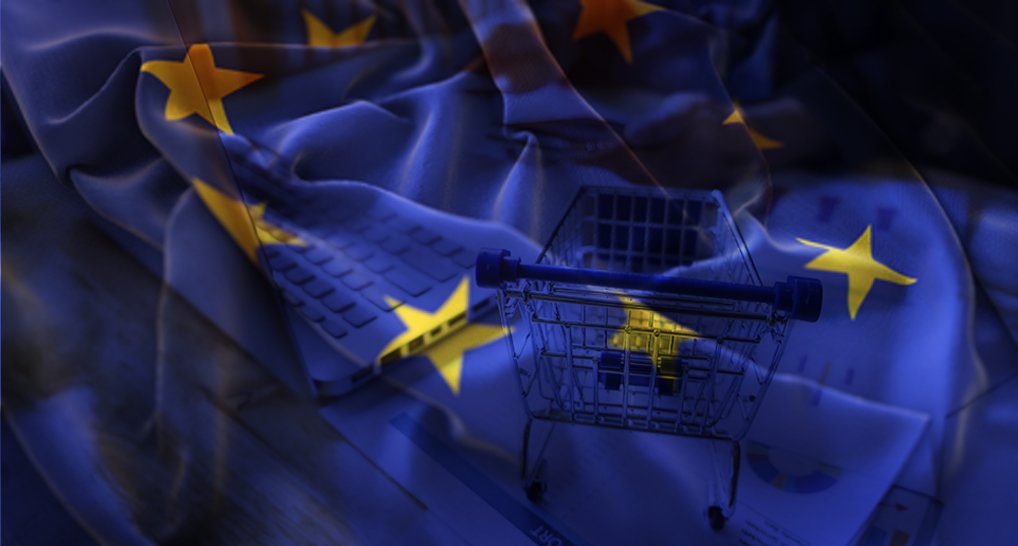Selling Online in the EU: a Cross and a Delight for all Brands
BlogJuly 13, 2021

Europe is a large and mature market for online commerce, a great target for cross-border ecommerce growth for many brands. The various countries within it are on average highly digitalized - the percentage of users who have access to the internet in Europe is 87% - and with the pandemic, online commerce, already developed throughout the area, has received a big boost in just a few years, reaching €376 billion in 2020, €76 billion more than in 2019. Selling in Europe, therefore, is a great opportunity for brands, but it requires a precise cross-border strategy set on the EU: there are different regulations and rates for each country, a GDPR to study and different cultures, languages and currencies for different UX.
Rules for cross-border online retail sales in Europe
Online cross-border retail sales are subject to many rules in Europe. First of all, it is necessary to provide comprehensive and detailed information to the customer before the customer has completed the sale: for example, it is mandatory to show the final price from the beginning on the product page (i.e. no taxes can be added during the buying process or at the end) and all extra charges must be explicitly agreed with the customer. In addition to this, every aspect of the website (header, footer, banners, etc.) is regulated and there is a 14-day return and refund policy.
European VAT
European VAT is the equivalent of sales tax, but with one important difference. Sales tax is retained at the completion of the sale, whereas VAT is retained at each stage of the supply chain. That is, every sale, right from the raw material, has VAT and this must be included in the price of the product from the start within the site. The problem with VAT in Europe is that those who decide to sell here have to consider different rates for different countries. Moreover, each country usually has different rates depending on the product you are referring to. For this reason, it is important to have technology that can support a multi-pricing multi tax regime. Furthermore, tax compliance, as of 1 July, can be done directly through a tax office in an EU country with the VAT One-Stop-Shop scheme.

Privacy
The General Data Protection Regulation, GDPR, was introduced in May 2019 and is a set of rules designed to protect consumer data online. An indispensable measure that must be taken into account: all customer data collected by the brand (personal data, billing information, shipping address, etc.) must be protected and managed in a specific way and for those who do not comply there are serious penalties, up to 4% of the company's entire turnover.
There are many requirements in the legislation, the main ones being: the appointment by the company of a data protection officer and a breach notification system. If the latter occurs, anyone affected must be notified, with full details of what data may have been exposed, what the potential consequences are and what countermeasures are in place to prevent a similar situation in the future.
Improving and localising UX
There are 27 countries in the EU and about 40 on the European continent. Each of these has a different culture, language, customs, regulations, often even a different currency than the others, not to mention the issue of taxes on cross-border transactions. For these reasons, UX becomes the key to sales.As a starting point, it is essential to provide complete information about the sale, also with respect to cross-border logistics: from where and to where to ship, who ships, transit times, etc.
Equally essential is to know the EU countries in depth and consider the local UX in terms of language, currency, preferred payment method or cross-border shipping company. A few examples: if you use iDeal you will do very well in the Netherlands (where it is used by 90% of the population) but woe betide if you use it in other countries (where it practically doesn't exist); German customers love shipping lockers, while in other countries only a very small percentage of the population uses them.
In summary
Selling in the EU can be the right challenge for the near future but before starting it is good to have a proper cross-border strategy and to be sure that:1- you are legally and fiscally compliant
2- the UX is localised for the different countries, at least those that are important for your sales.
The first step makes the difference between existing or not, the second makes the difference between a 0.X% conversion rate and a 2%-4% conversion rate.
It might also interest you: Cross-border Ecommerce in Italy: now or never

